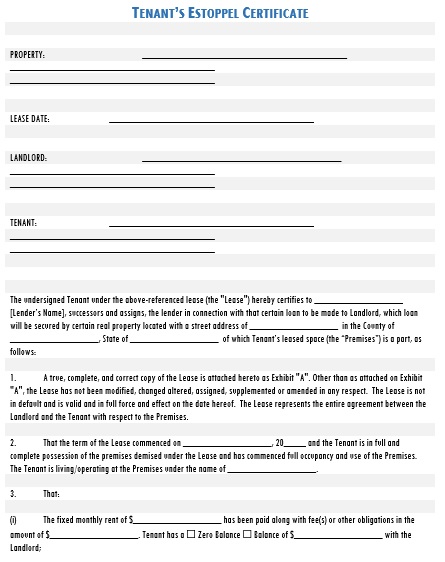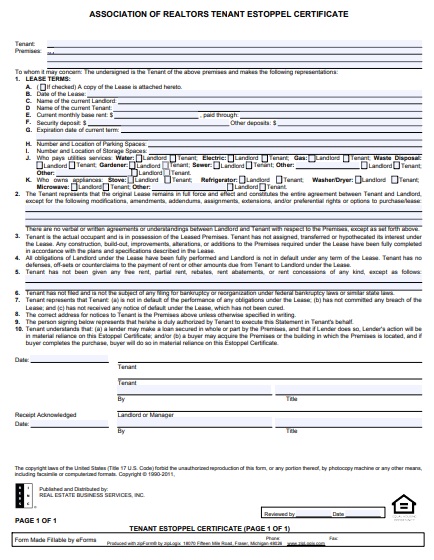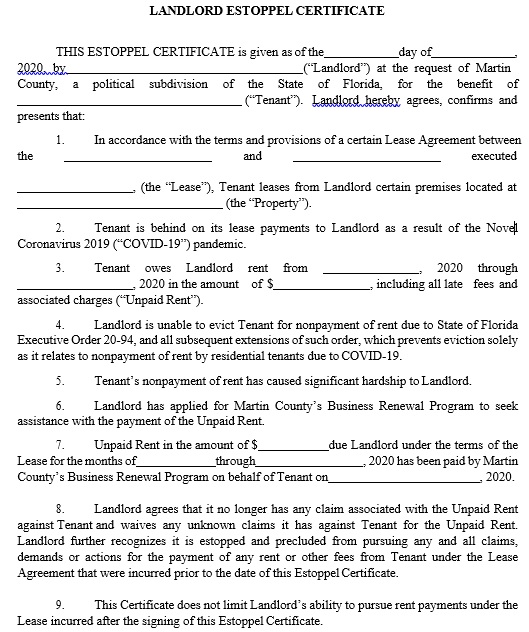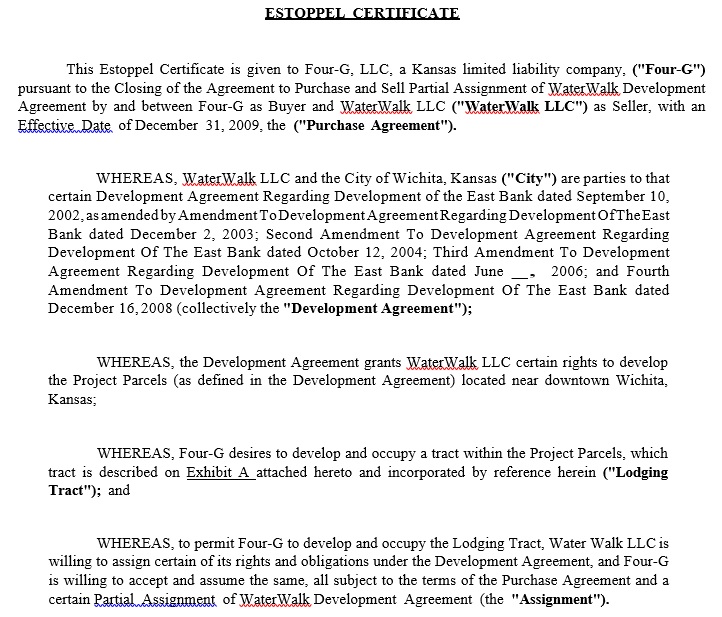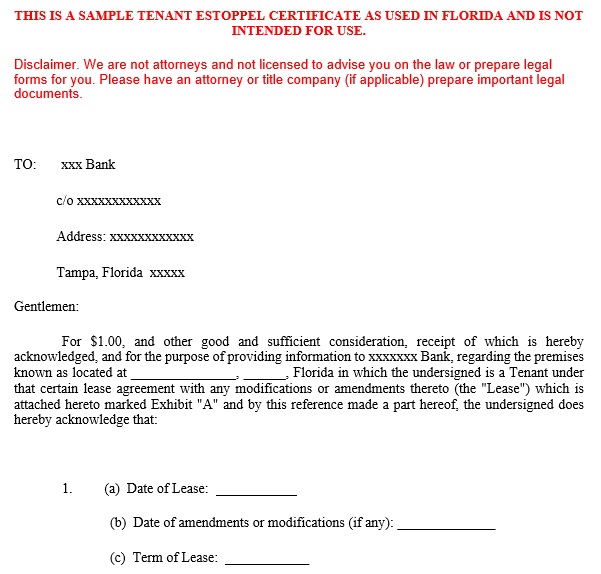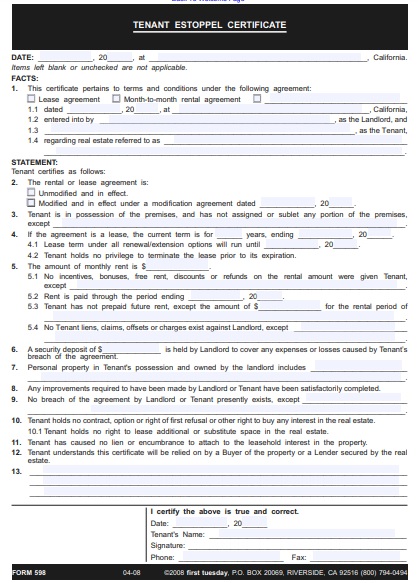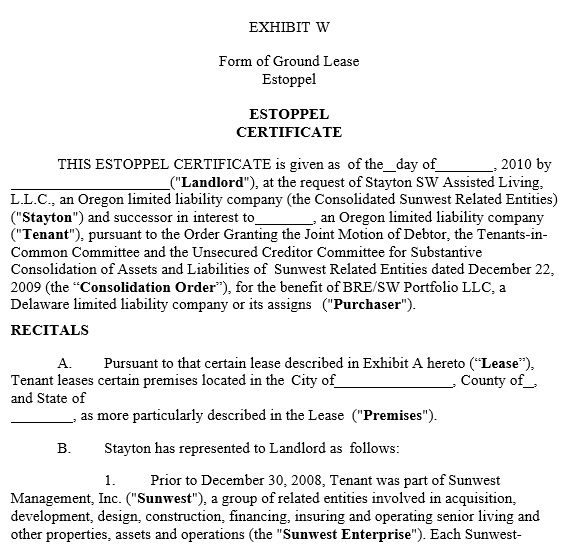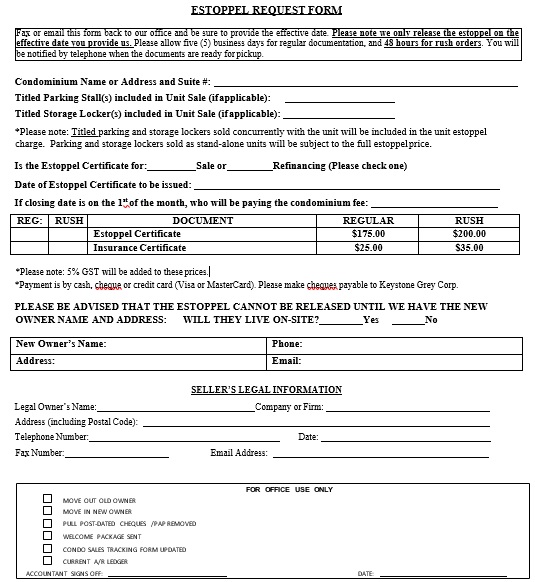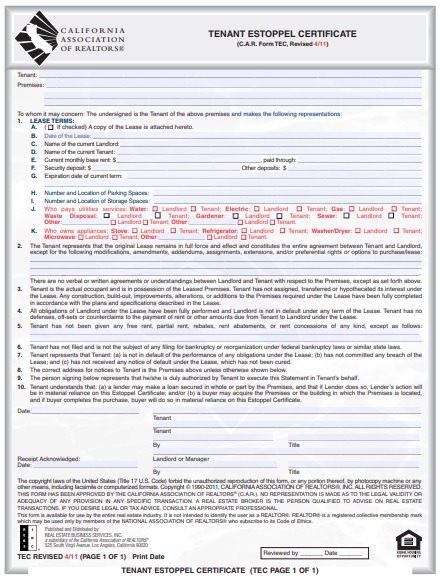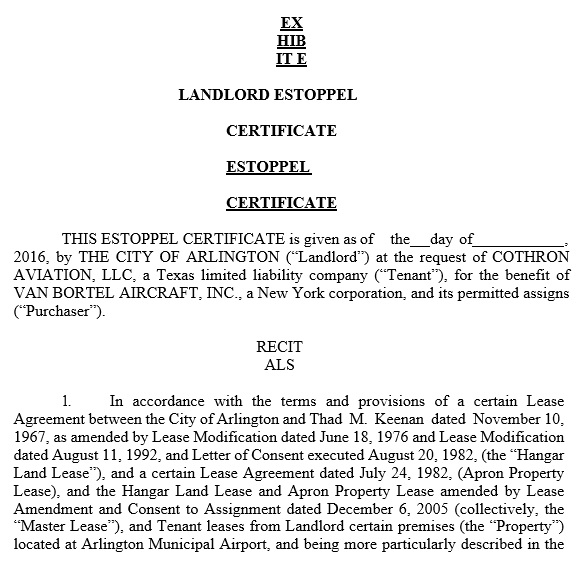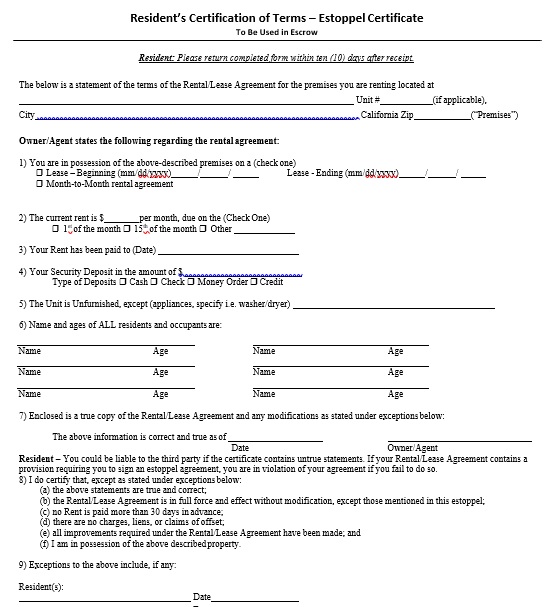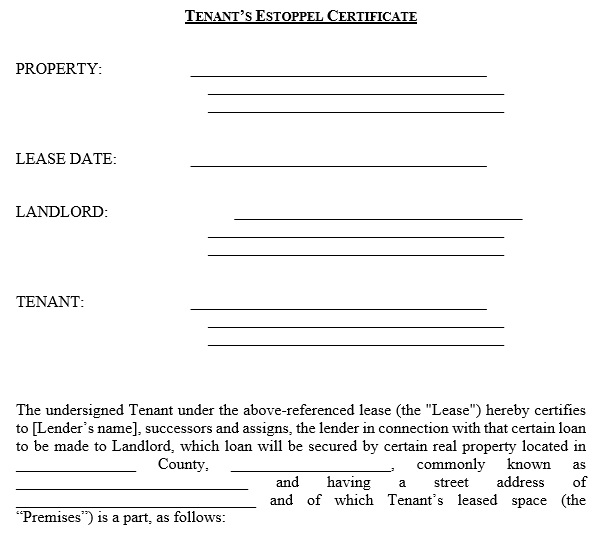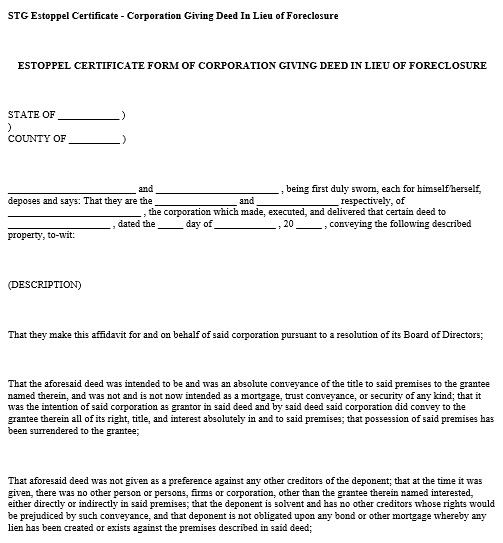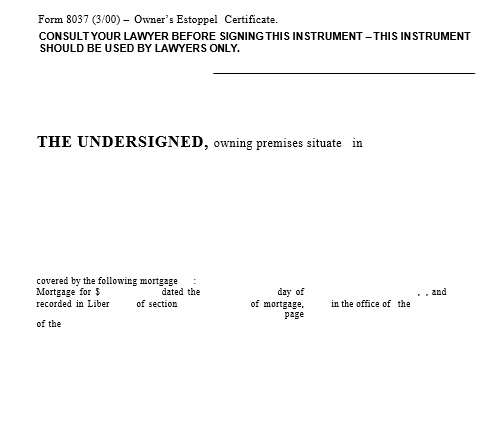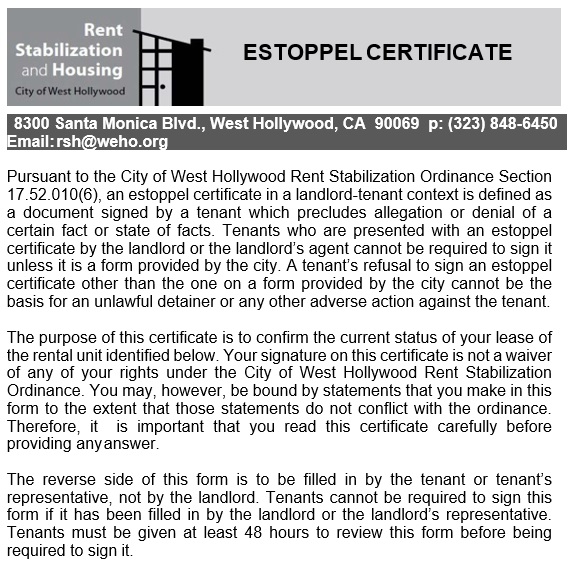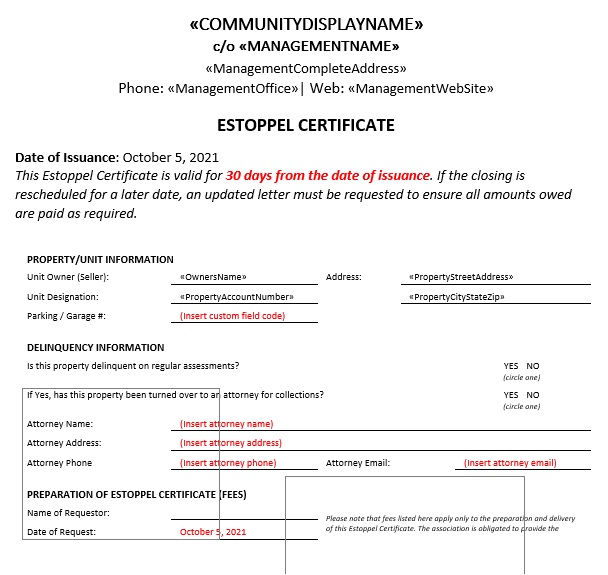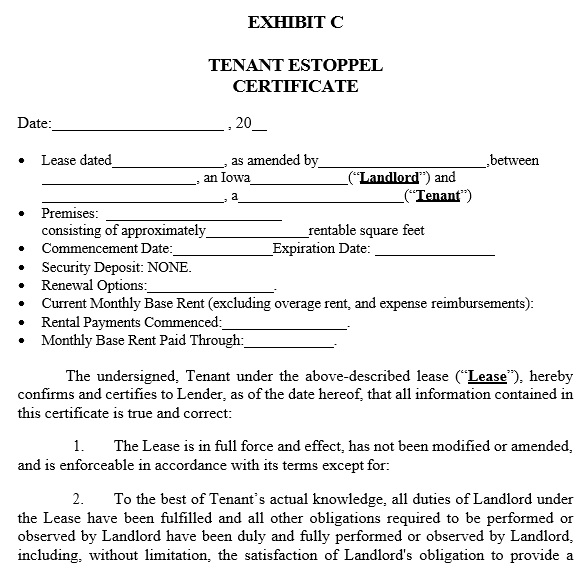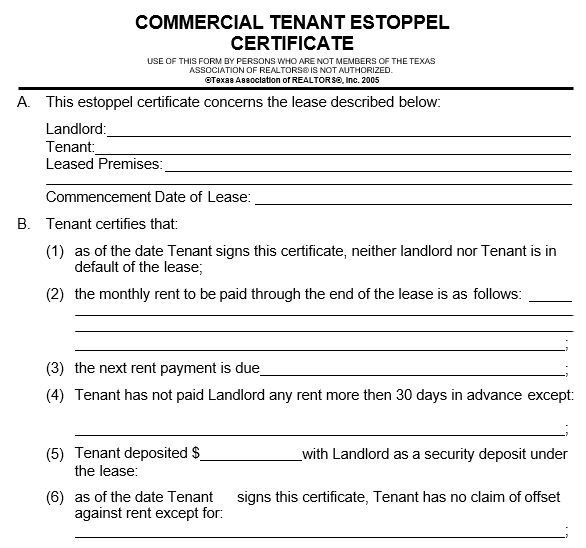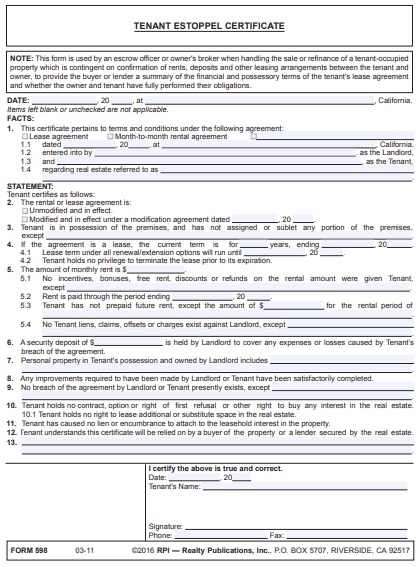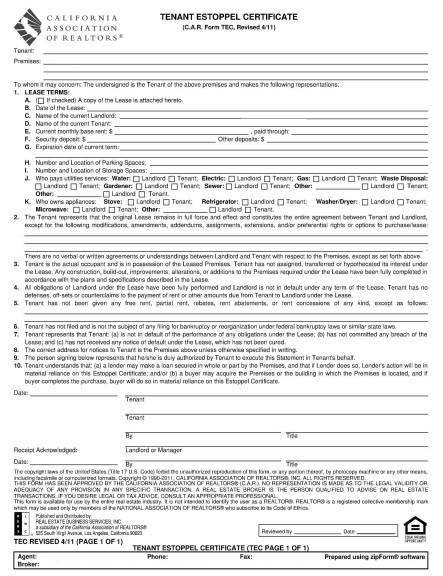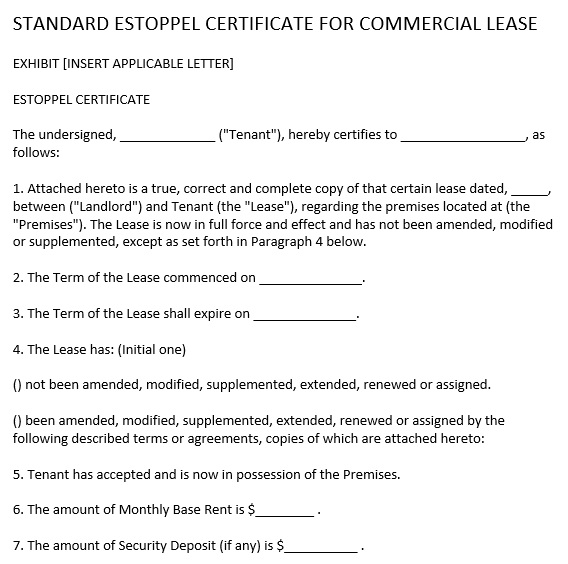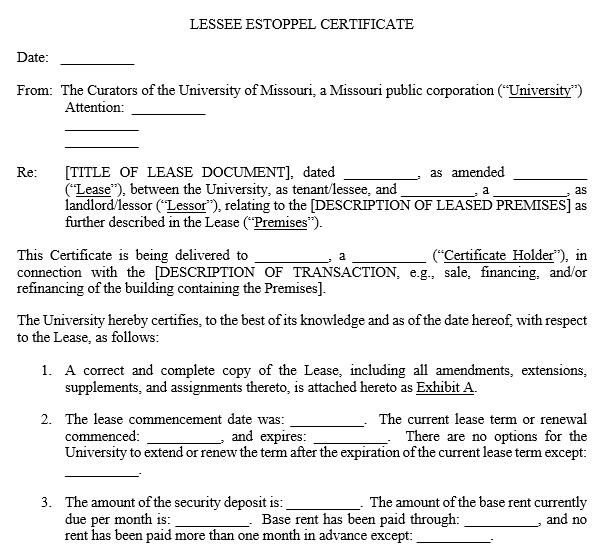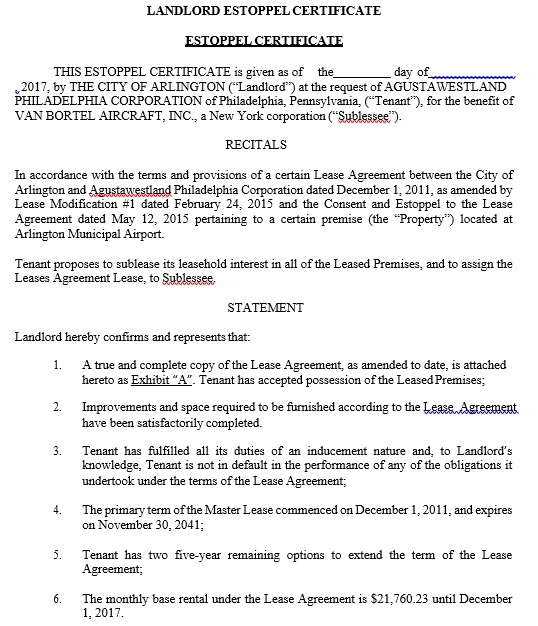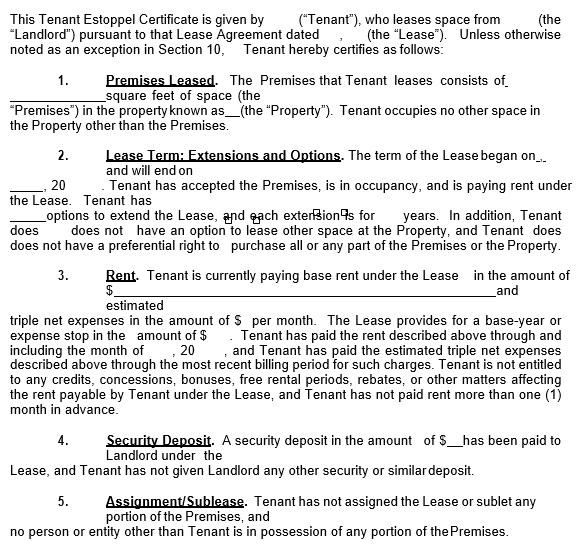You have to create an estoppel certificate form when you lease your property. This document is sent to the tenant and it prevents a person from contradicting anything they have previously stated. This certificate is a principal in law and usually used in mortgage and real estate activities.
Table of Contents
What is an estoppel and why is it used?
An estoppel certificate form is requested as part of an agreement in many mortgage and real estate deals. It is completed and signed by the tenant. This document is used in proposed transaction as the landlord with a third party. Moreover, this certificate form provides verification about the terms of the contract such as the rent amount, security deposit amount, and the contract’s expiration.
The tenant estoppel form provides the tenant an opportunity to demonstrate if they have claims against you. This effects the decision of a lender or a buyer whether to withdraw from or continue with the transaction you have proposed.
Commonly, a few lease agreements ask the tenant to complete this certificate. However, this certificate form forbids a tenant from going back on their word. It also serves as a promise or proof of cash flow. It also gives third-party verification.
Keep in mind that this certificate form is a confirmation by the tenant that you aren’t modified any information that put yourself in a more beneficial position. In short, it holds you and your tenant to the honesty.
In property acquisition, during the stage of due diligence, you can also showcase the certificate to investors. The certificate provides both the lender and investor more confidence. Their primary purpose is to secure a good cash flow in their investment.
What to include in an estoppel certificate form?
Below are the most important details that you should include in your form;
- Your name and your tenant’s name
- The type of property
- The terms and conditions of your lease
- Description of the rent amount
- The amount of the security deposit
When the tenant has affixed their signature on this form, it confirms the accuracy of the terms of the lease and state that you have both agreed on them. Once they sign the agreement, the tenant has lost the ability to make any claims that contradict the claims detailed in the certificate.
Where to use an estoppel certificate form?
You can use an estoppel certificate form in the following places;
- You can use it when you are mortgaging or selling your property and you have to request confirmation from your tenant about the status of the current lease.
- In case, when your tenant wants to sublease the property. In such situation, before they sign the sublease, the certificate form can make the sub-lessee understand the status of the underlying lease.
- In the course of a corporate transaction, you can also utilize the certificate.
- Sometime a prospective buyer of a property might make a request for this certificate. This certificate should get the property encumbered by an existing document such as a reciprocal easement agreement or a declaration governing maintenance at the property. The buyer should also ask the party responsible for the collection of due payments. This is also stated in the operating document like association. The reason for this is to verify that the current property owner has been responsible for making all the needed payments.
- When a buyer assigns their interest in a real estate buy agreement to a third party, you can also use this document. However, it is a rare case.
An estoppel certificate form is a useful document in various situations especially during the process of due diligence. Also, this document removes the risk in a commercial transaction of real estate.
How to write a tenant estoppel certificate?
After filling up your estoppel certificate form, you should create your tenant estoppel certificate depending on your purpose;
Basic details:
At first, enter the date when you prepare the certificate. Give the basic details of your lease like either it’s a fixed or a monthly agreement. Then, write down the complete address of your property including unit numbers and the full names of both the landlord and the tenant.
Relevant agreement:
Here you have to give information regarding either you have modified the lease or sublet. Along with, provide relevant details and dates. If the lease still remains active then the tenant must specify it.
Details of the lease:
State that whether the lease is a monthly or fixed-term agreement. When your lease agreement started, provide the date and also indicate the end date of your lease too. Also, mention the duration of the agreement. Include the payment details that contains the exact rent amount paid and the frequency and any fees other than the rent that your tenant pays and what these fees are for. Write the date of the last rental payment and any rent payments that your tenant made in advance. Mention the actual amount for each of these payments and then, for the security deposit, provide the complete amount paid by your tenant.
Provisions:
This section includes the following details that you want the other party to meet;
- At the address of the rented property, if you have any personal property then indicate details that what these are and if your tenant has possession of them.
- If you allow your tenant to buy the rental property.
- Address any pending maintenance or repair issues and if you have maintained the property adequately.
- If there is any violation to the agreement and you have already resolved these.
You should provide details regarding these issues.
Signature:
In the end, the tenant affixes his signature and provides the date of the certificate in the presence of a notary public.
Conclusion:
In conclusion, an estoppel certificate form is an agreement between the landlord and the tenant. It is basically used in real estate activities to describe the existing conditions of a lease agreement. This document states your relationship with your tenant. Additionally, it contains details about the rights of the tenants living in your property.


